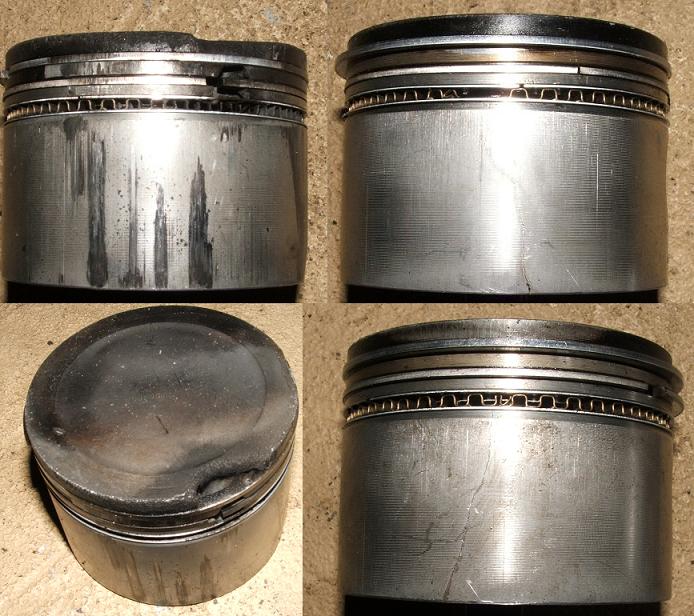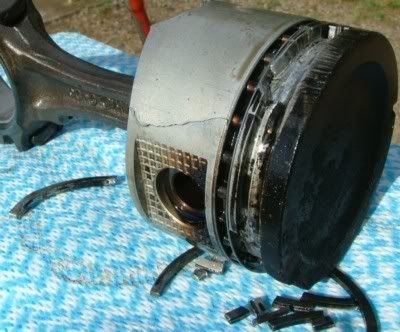| Revision as of 08:06, 16 August 2016 ddgonzal (Talk | contribs) <- Previous diff |
Revision as of 08:27, 16 August 2016 ddgonzal (Talk | contribs) Next diff -> |
||
| Line 4: | Line 4: | ||
| CONSTANT-LOAD RACING METHOD | CONSTANT-LOAD RACING METHOD | ||
| - | * Lock the distributor advance. Set full timing to a low level, say 23 degrees | + | * Lock the distributor advance. Set full timing to an appropriate level, say 30 degrees for a high-compression engine or for maximum advance at 16 psi boost: 23 degrees. |
| LOW-DOLLAR STREET POWER METHOD | LOW-DOLLAR STREET POWER METHOD | ||
| - | * In the distributor, weld the advance slots partially to limit mechanical advance | + | * In the distributor, weld the advance slots partially to limit mechanical advance (see [[Spark_Curve#Limiting Mechanical Advance|Limiting Mechanical Advance]]) |
| - | * Keep the stock vacuum advance (it will have no effect under boost) | + | * Keep the stock vacuum advance (it will have no effect under heavy throttle or boost) |
| - | * Connect vacuum advance up directly to manifold. This will help idle and starting out under low throttle, but the vacuum advance will have no effect under boost | + | * Connect vacuum advance up directly to manifold. This will help idle and starting out under low throttle, but the vacuum advance will have no effect under heavier throttle |
| * Set initial timing to lower than normal, say 3 degrees or 0 degrees (instead of the normal 5-7) | * Set initial timing to lower than normal, say 3 degrees or 0 degrees (instead of the normal 5-7) | ||
| - | * In the distributor, weld the advance slots partially to limit mechanical advance. For example, maximum advance at 16 psi boost: 23 degrees. If you end up with too little advance, you can file the slots a bit longer to increase the range (stock range is about 25 degrees, you might shoot for something like 18 degrees mechanical advance) | + | * Downside: On a forced-induction engine, the advance won't be right for varying boost levels. You'll have to set the advance for full boost scenario, giving up HP and fuel economy for lower throttle conditions such as highway cruising |
| - | * This will enable approximately the right advance for varying RPMs | + | |
| - | * Downside: The advance won't be right for varying boost levels. You'll have to set the advance for full boost scenario, giving up HP and fuel economy for lower boost conditions such as highway cruising | + | |
| A BETTER METHOD is to use a standalone advance controller like the [http://www.cbperformance.com Black Box], which allows for limited mechanical advance along with variable retard under boost, off-boost, and partial-boost conditions. With such a controller, the distributor is locked, and the box takes over the exact timing curve. | A BETTER METHOD is to use a standalone advance controller like the [http://www.cbperformance.com Black Box], which allows for limited mechanical advance along with variable retard under boost, off-boost, and partial-boost conditions. With such a controller, the distributor is locked, and the box takes over the exact timing curve. | ||
| Line 22: | Line 20: | ||
| [http://datsun1200.com/modules/myalbum/photo.php?lid=16466 cracked pistons, broken ring lands] | [http://datsun1200.com/modules/myalbum/photo.php?lid=16466 cracked pistons, broken ring lands] | ||
| - | <br><img size=400>http://datsun1200.com/uploads/photos/16466.jpg</img> | + | <br>http://datsun1200.com/uploads/photos/16466.jpg |
| - | <img size=400>http://i11.photobucket.com/albums/a164/KB10/Pistnbroke02-1.jpg</img> | + | http://i11.photobucket.com/albums/a164/KB10/Pistnbroke02-1.jpg |
Revision as of 08:27, 16 August 2016
The more compression, the less advance the engine can handle. But a high-compression engine can still use some advance, and even a forced-induction engine needs some advance to make the most power at varying RPMs. The key is LIMITING the advance to a safe level.
What about locking the distributor? Yes, if you lock the advance mechanism, yes, it can help prevent detonation, but also it won't make the best power. Locked distributor will only work great at high-RPM, high-boost condition -- which is where racers spend most of their time, so it works well for racing. For a street engine, you will have a more flexible, more powerful engine at all RPMs by NOT locking the distributor, but by limiting the advance.
CONSTANT-LOAD RACING METHOD
- Lock the distributor advance. Set full timing to an appropriate level, say 30 degrees for a high-compression engine or for maximum advance at 16 psi boost: 23 degrees.
LOW-DOLLAR STREET POWER METHOD
- In the distributor, weld the advance slots partially to limit mechanical advance (see Limiting Mechanical Advance)
- Keep the stock vacuum advance (it will have no effect under heavy throttle or boost)
- Connect vacuum advance up directly to manifold. This will help idle and starting out under low throttle, but the vacuum advance will have no effect under heavier throttle
- Set initial timing to lower than normal, say 3 degrees or 0 degrees (instead of the normal 5-7)
- Downside: On a forced-induction engine, the advance won't be right for varying boost levels. You'll have to set the advance for full boost scenario, giving up HP and fuel economy for lower throttle conditions such as highway cruising
A BETTER METHOD is to use a standalone advance controller like the Black Box, which allows for limited mechanical advance along with variable retard under boost, off-boost, and partial-boost conditions. With such a controller, the distributor is locked, and the box takes over the exact timing curve.
BEST OF ALL METHODS is to use a fully programmable ignition system with a crank trigger. MegaSquirt and other ECUs can provide initial timing, limited full timing, timing under boost and even retard under boost and compensate for high temperatures.
Consequences of too much spark advance:
cracked pistons, broken ring lands



![[Datsun 1200 encyclopedia]](/wiki/upload/wiki.png)